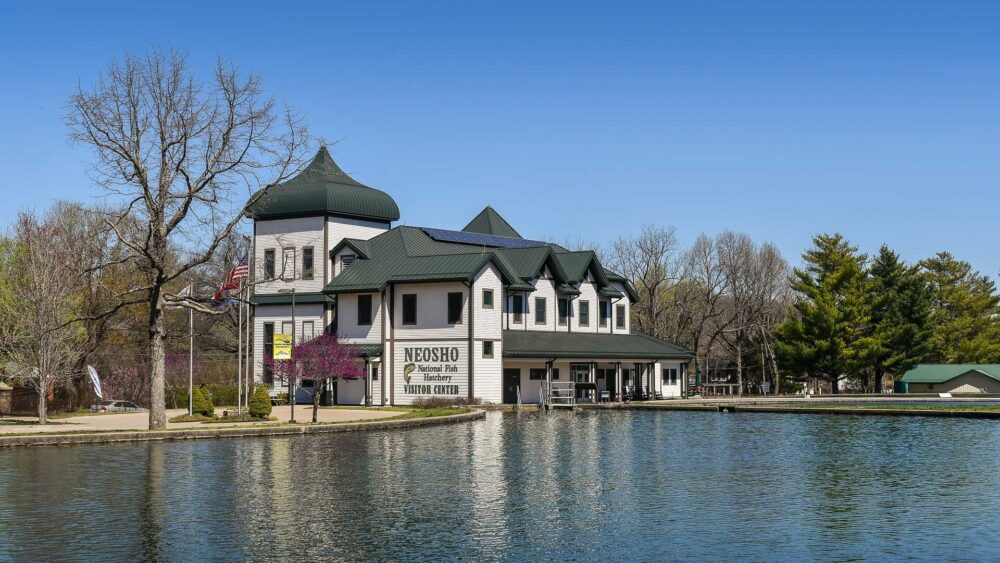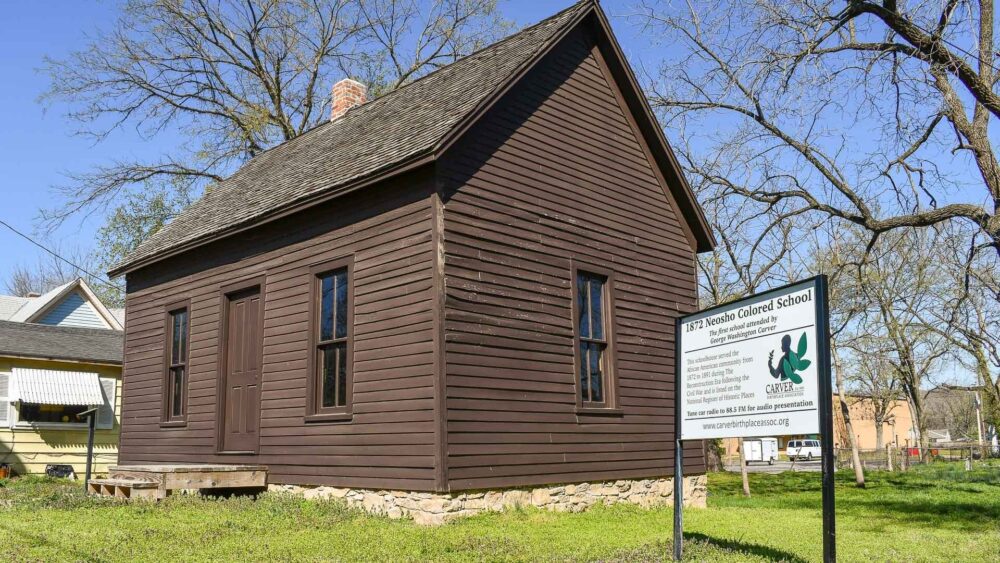CFO Stories
Leading Locally: Neosho Area Community Foundation
At one time, the Newton County seat worked to become known for its dogwood trees and as the Flower Box Capital of the country.

At one time, the Newton County seat worked to become known for its dogwood trees and as the Flower Box Capital of the country.
A diverse mix of cultures and communities comprise Neosho, a town that dates to 1839 and is connected with several notable names.
Famed scientist George Washington Carver was born nearby, and the first school he attended was in Neosho itself. Famed winemaker Hermann Jeager had a hand in helping the French wine industry. Neosho is also where famed artist Thomas Hart Benton was born.
During World War II, the town was involved in the war effort through Camp Crowder; later, in the race for the moon through Rocketdyne, a factory that produced rocket and missile engines.

The Neosho National Fish Hatchery was established in 1888. According to its website, it is "the oldest continuously operational federal fish hatchery raising fish today."
Today, amid a distinctive style of native-stone architecture, the town of about 13,000 people is also supported by the Neosho Area Community Foundation. Founded in 2011, the NACF has distributed more than $639,149 back to the community and holds assets totaling $1,731,923 as of June 2023.
“We have kind of a melting pot here,” says Blake Hierholzer, president of the NACF. “We have a little bit of everything, which is kind of the fun part. We’re still grassroots America. We’re still pretty traditional and down to earth. We have low taxes, it’s a friendly place, and we have a good school system. Just sort of your Main Street, middle-of-America type community.”

Big Spring Park, a popular gathering place, is one of Neosho's landmarks.
Over the past 13 years, the NACF — an affiliate of the Community Foundation of the Ozarks — has worked to meet local needs in a variety of ways.
“It’s helping neighbors,” Hierholzer says of the foundation’s work. “It’s the people we grew up — I grew up with — just trying to help their kids or trying to help their family. Just making it a little bit easier for everybody trying to make ends meet, or just trying to make it through the end of the week.”
He shares one example: The local school lunch program, to which the foundation has granted.
“Some kids don’t even have lunches, so we tried to provide support for them. We donated to our school district’s lunch program, so that hopefully some kids can have better lunches or take food home for the weekend.”
In addition to Neosho, the NACF supports smaller communities throughout Newton County, such as Diamond where a new opportunity in 2023 came through the Paul Dieckhoff Diamond High School Fund. The scholarship endowment was established in memory of a beloved civics and history teacher. When the endowment meets its fundraising goal, it will provide about $20,000 annually for scholarships to Diamond High graduates.
“We obviously want to support education,” Hierholzer says of one of the foundation’s top priorities, listing others such as food and housing security and youth-related needs. “We’ve donated across the board as much as possible to try to reach what we kind of see as the biggest needs.”

The Neosho Colored School once served Black students — including legendary scientist George Washington Carver — in days of segregation.
The NACF’s work also ties to planning for a greater tomorrow through encouraging the work of future generations.
“We gave to the robotics club one year so kids at the high school could go to a state-level competition,” Hierholzer says. “That’s definitely rewarding — to be able to give those kids an opportunity.”
In addition to its grants and programs, the NACF works with several nonprofit partners that also support the community in ways from arts to education.
“We work with the library; they’re our largest fund,” Hierholzer says. “We hope to be able to continue to help them, and work with them to address some of the needs that they have.”
They’re efforts which tie to the foundation’s present and future, Hierholzer says.
“If it can just help one person, it’s worth it in the end.”
Despite its longevity, a goal for the NACF is greater name recognition and awareness about the options it offers the community. It’s also a priority to continue learning about the unique needs of the area so the foundation can help when it can.
“In a small town, we kind of know what’s going on,” Hierholzer says. “We have our ear to the ground, so we kind of know who needs what, and we know who else was supporting it. We want to make sure that as many charities as possible are being reached.”
By Kaitlyn McConnell, writer in residence for the Community Foundation of the Ozarks